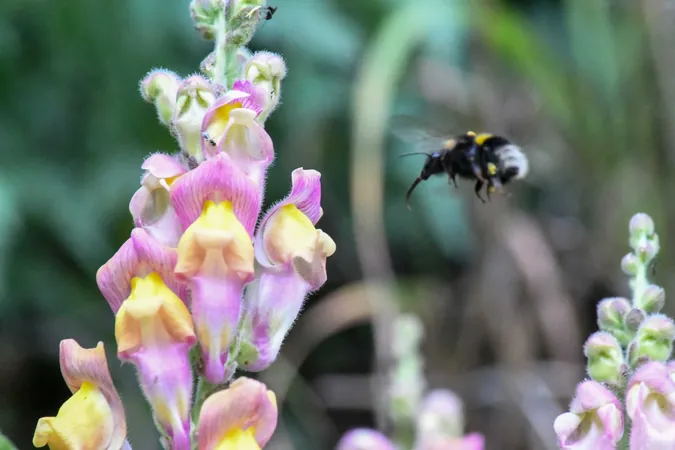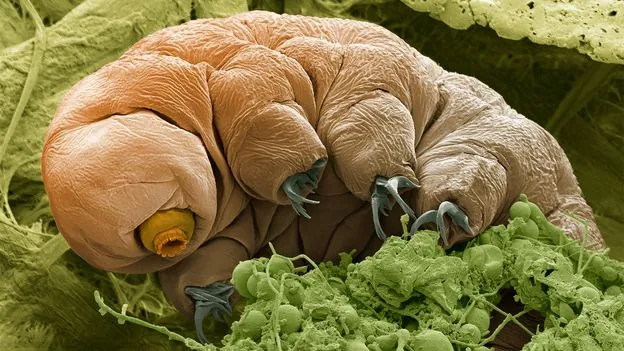
Unlocking the Secrets of Snapdragon Color: Scientists Explore Ancestry in the Pyrenees
2025-09-22
Author: Mei
Journey to the Pyrenees: A Floral Expedition
Every season, a dedicated team from the Institute of Science and Technology Austria (ISTA) embarks on a remarkable journey to the stunning Pyrenees. Their goal? To gather snapdragon flowers and delve into their genetic mysteries.
Revealing Nature's Palette
In an eye-opening study published in *Molecular Ecology*, researchers unveil how different color genes maintain distinct snapdragon varieties even when they thrive in the same habitat. These vibrant flowers, known as Antirrhinum, with their dragon-like jaws, display a stunning array of colors.
The Unique Landscape of the Pyrenees
Nestled between France and Spain, the majestic Pyrenees stretch from the Bay of Biscay to the Mediterranean, alluring tourists with their breathtaking valleys and peaks. For Arka Pal, a passionate biologist and Ph.D. student, this pristine environment serves as a living laboratory for his research on snapdragons.
Collecting Nature's Treasures
For nearly two decades, the Barton group has trekked to Planoles, a picturesque Spanish village perched at 1,135 meters altitude, amassing over 5,000 flower samples each field season. "You might say we’re just hiking," Pal quips, "but Antirrhinum prefers growing along human-made paths, which means our hikes often lead us through brambles and nettles!"
A Colorful Collaboration
As they gather these enchanting flowers, researchers meticulously document the plants' growth, GPS locations, and take detailed photos. Each sample is analyzed for its vibrant hues of magenta and yellow, which are essential for understanding the genetic blueprint of these floral beauties.
Nature's Hybrid Zones: A Living Laboratory
Pal’s fascination lies in the process of speciation—the birth of new species from a shared ancestor. In Planoles, two distinct snapdragon varieties, one with striking yellow and the other with deep magenta flowers, naturally hybridize. This region serves as a crucial 'hybrid zone,' a natural experiment in evolution.
Genetic Insights from the Past
During the last ice age, these two snapdragon varieties were separated by glaciers. As the ice receded, they gradually spread into overlapping territories, creating a narrow hybrid zone where stunning color combinations arise. "These hybrid zones give us a front-row seat to witness evolution at work," Pal explains.
A Deep Dive into Genetics
Planoles isn’t alone in its hybridity; a similar zone exists near Avellanet, 100 kilometers west. As Pal analyzed samples from both zones back at ISTA, he discovered fascinating details about their genetic make-up. "Think of the genome as an encyclopedia filled with words—the ones that matter most keep species distinct," he notes.
The Color Conundrum
Researchers found that while many genome sequences varied between the two zones, the seven key genes driving flower color remained consistent. This consistency in the color genes, despite other variations, helps snapdragons maintain their distinct identities.
Evolutionary Connections Unveiled
When comparing the genomes, it became clear that color genes defy the odds of genetic proximity—they are more closely related across the different hybrid zones than anticipated. This finding is profound, suggesting that these color traits play a vital role in the survival and reproduction of snapdragons, allowing them to remain distinct even amidst genetic similarities.
The Importance of Flower Color in Nature
Pal's research suggests that flower color is crucial for attracting pollinators. Bees, who prefer distinct colors, help ensure the survival and passage of genes to future generations. The continuing mysteries of snapdragon ancestry underscore the intricate interplay of nature's forces in one of the world’s most stunning natural amphitheaters.



 Brasil (PT)
Brasil (PT)
 Canada (EN)
Canada (EN)
 Chile (ES)
Chile (ES)
 Česko (CS)
Česko (CS)
 대한민국 (KO)
대한민국 (KO)
 España (ES)
España (ES)
 France (FR)
France (FR)
 Hong Kong (EN)
Hong Kong (EN)
 Italia (IT)
Italia (IT)
 日本 (JA)
日本 (JA)
 Magyarország (HU)
Magyarország (HU)
 Norge (NO)
Norge (NO)
 Polska (PL)
Polska (PL)
 Schweiz (DE)
Schweiz (DE)
 Singapore (EN)
Singapore (EN)
 Sverige (SV)
Sverige (SV)
 Suomi (FI)
Suomi (FI)
 Türkiye (TR)
Türkiye (TR)
 الإمارات العربية المتحدة (AR)
الإمارات العربية المتحدة (AR)